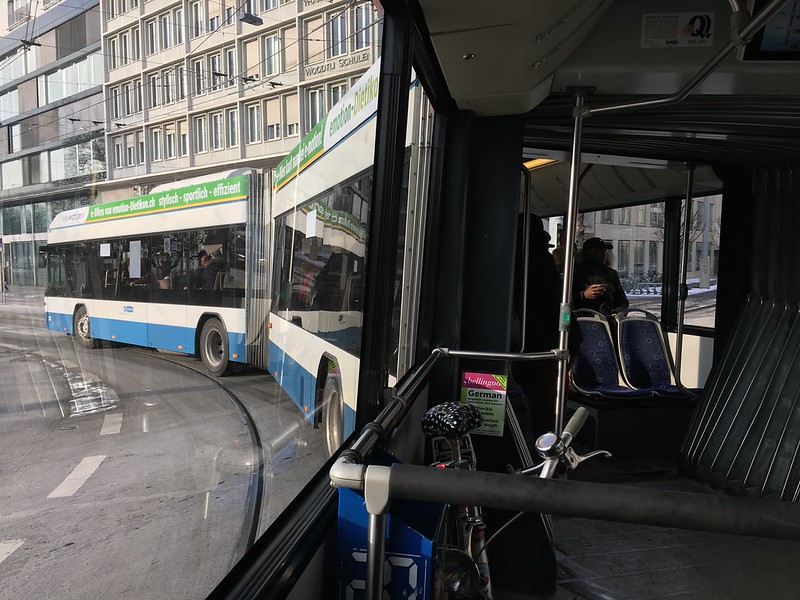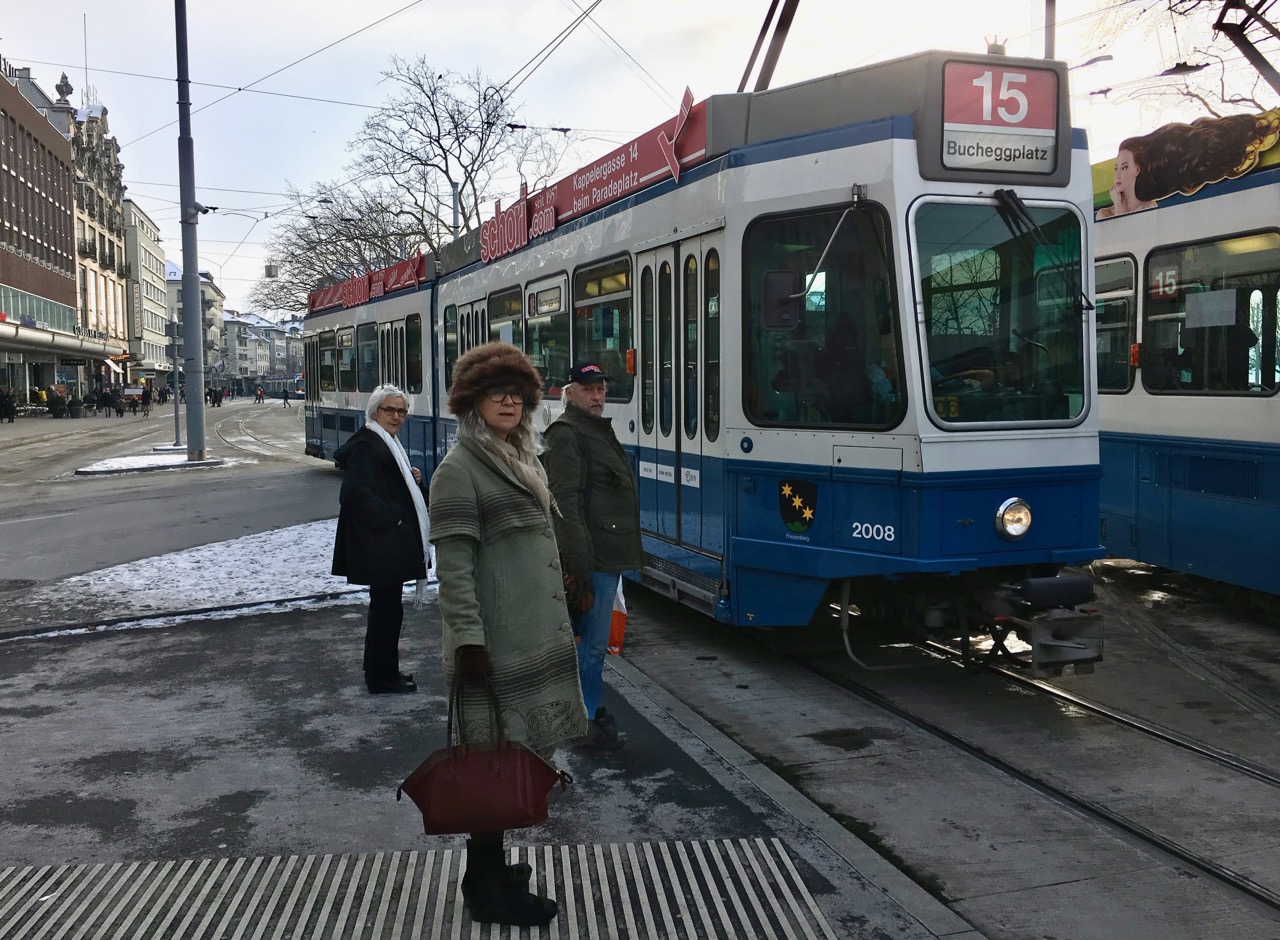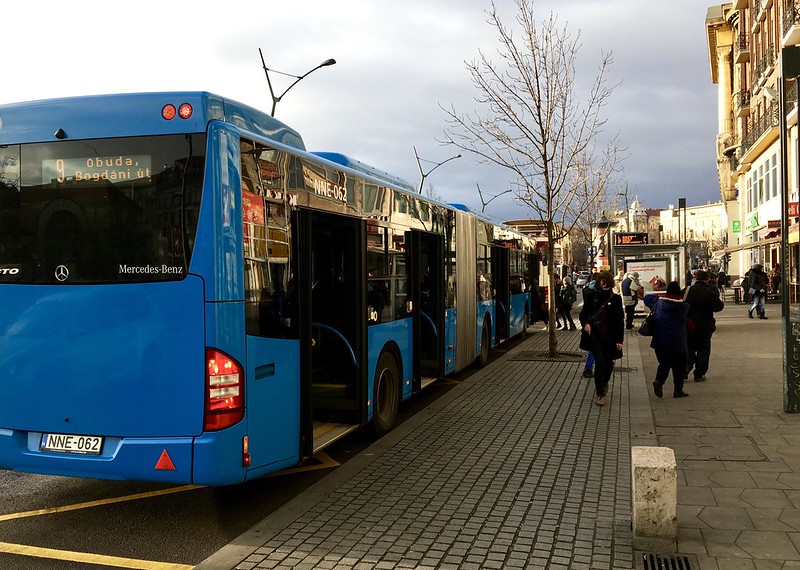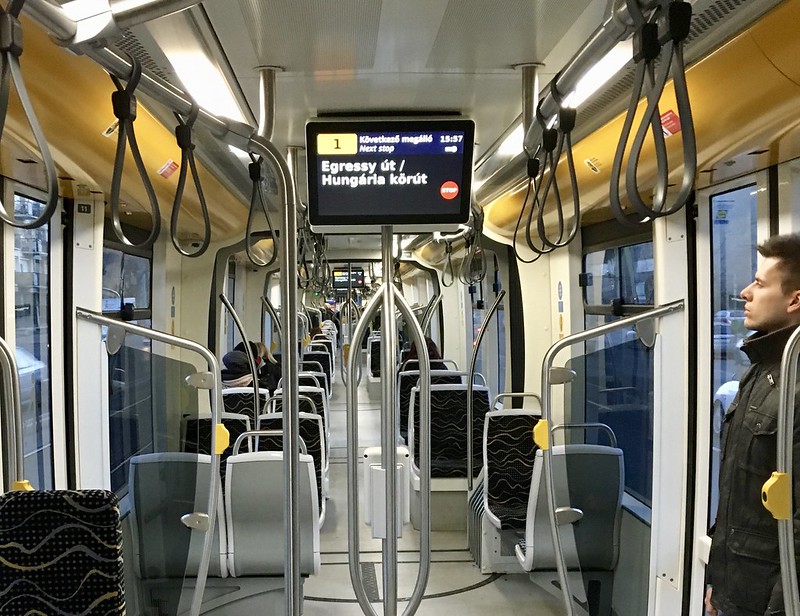During the three weeks I recently spent vacationing in northern and eastern Europe, I got to ride many of the world's best transit systems. I started my trip in North Rhine-Westphalia, Germany's most populous state, where 18 million people live. I visited Dinslaken, a small town of 67,000, followed by Budapest, Amsterdam, a quick stopover in Freiburg, a German city of 218,000, and wrapped up my trip with two days in Zurich. By the end of my journey, it occurred to me that there are five key principals of high-quality public transportation that, if adopted in Chicagoland, would go a long way to attract new riders.
I'd already been to Amsterdam several times on previous trips, so I knew how good their transit is, even though I did most of my travel by bicycle. I'd also visited dozens of other cities and towns in the Netherlands and several cities in Germany, all of which had high quality public transportation.
But transit in Budapest and Zurich is even better. I checked out Zurich for the first time last year during a two-hour airplane layover, a brief visit which was possible because the airport is only ten minutes from the city center by train. Budapest and Zurich both have ultramodern fleets of buses and trams that all stop at well-designed outdoor plazas. Budapest also has state-of-the-art, articulated, subway trains. In the 1960s and 1970s Zürchers (Zurich residents) decided against building a subway because it would have reduced the amount of tram service. Both cities rely heavily on trams that come every three to six minutes, which can carry more people than buses can.
My experiences riding transit in the ten European countries and dozens of cities I've visited this decade inspired the following list of best practices that should be applied in Chicagoland.
1. Widespread availability of dedicated bus lanes. Bus-only lanes are one of the best ways to speed up bus travel, and they seem to be the rule, rather than the exception, in European city centers. The millions of dollars the Chicago Transit Authority is currently spending on a new radio and software package to better communicate with bus drivers and fight bus bunching is using technology to solve a geometry problem. The CTA may gain a few seconds here and there by avoiding bus-bunching, but that's nothing compared to the time savings from well-enforced bus-only lanes. The Loop Link system is a step in the right direction, but it needs to be refined, and dedicated lanes need to be added to as many other bus lines as possible.
2. More doors on buses. Chicago Transit Authority buses need more doors so people can get on and off faster, and they should order these buses with extra doors on their next contract to speed up boarding and alighting. Buses that are going to be used on the busiest routes should have three doors minimum. However, I've even seen four doors on standard-length buses in other cities. It's rare to see a bus in European city centers with only two doors, and you'll never find an articulated bus with fewer than three doors; the CTA uses only two doors on its "bendy" buses. Zurich and Lucerne each use double-articulated buses that have five doors, which I'd recommend the CTA use on high-ridership routes like the #66 Chicago Avenue line.

3. All-door bus boarding. The CTA has tested all-door boarding, but in a rather labor-intensive, awkward, way at two stops. At the Belmont Blue Line station, passengers pay at an outdoor turnstile and enter a waiting pen until the bus comes. On many bus routes in Europe, riders board through any door and show proof of fare if asked by an inspector. This is a policy that can be route and bus dependent. Some buses and routes in Budapest require that you show the driver your pass, and others – mostly the routes that use the highest-capacity buses – don't. Doors can be built and marked to enforce a two-way or exit-only policy.
San Francisco MTA buses have had all-door boarding for years.
4. Standardized information displays. CTA, Metra, and Pace each have their own design standard, and the Regional Transportation Authority offers a fourth. There can be more if there are outdated signs and maps that haven't been replaced. Sometimes the City of Chicago shows off their own design, which is prominent in the underground pedway that connects CTA and Metra stations.
In Budapest, the transit "network coordinator" is BKK, which also operates local bus routes. In addition to making sure every route logo, map, and sign looks the same, they integrate wayfinding for the BuBi bike share system to instruct "exit here to find the bikes" instead of elsewhere in a subway station.
The common design is most prominent inside every bus, trams (operated by a different company), subway car, and suburban train (also operated by a different company): Large LCD screens inside the vehicles show upcoming stops and stations and the transfers you can make there, powered by the same app. The CTA tried this on the J14 Jeffery Jump, but it didn't always work well, and the last time I rode that route the screen was switched off.
Common branding and design aspect also makes a transit system easy to use for tourists. Tourists shouldn't have to spend time trying to understand the intricacies of a transit system, or system of systems, when they visit a city. The RTA is attempting to make it easier for people to find efficient walking routes for connections between Metra and CTA in downtown Chicago at Union and Van Buren Street stations.
Tourists shouldn't have to know that one route is operated by one company and requires a different ticket than another route operated by a second company.
5. Fare integration. The three Chicago operators have a single payment method – even though using Ventra to buy a Metra ticket is one of those intricacies because you need a smartphone app, not the card – but they don't have fare integration. There's no single pass or ticket that allows you to transfer between Pace and CTA routes and Metra routes.
I could ride any route in Budapest with my five-day pass, regardless of which company operated the route. Frankly, it's nigh impossible for someone to detect that different companies operate different modes in Budapest. In Zurich, too. I could ride any route in the city using my combined transit and museum pass – including intercity and suburban trains in the adjacent fare zones.
These aspects are standard operating procedure in transit systems around the world. If it happens, Mayor Rahm Emanuel can try stealing workers and businesses from Europe in addition to West Coast tech workers.






